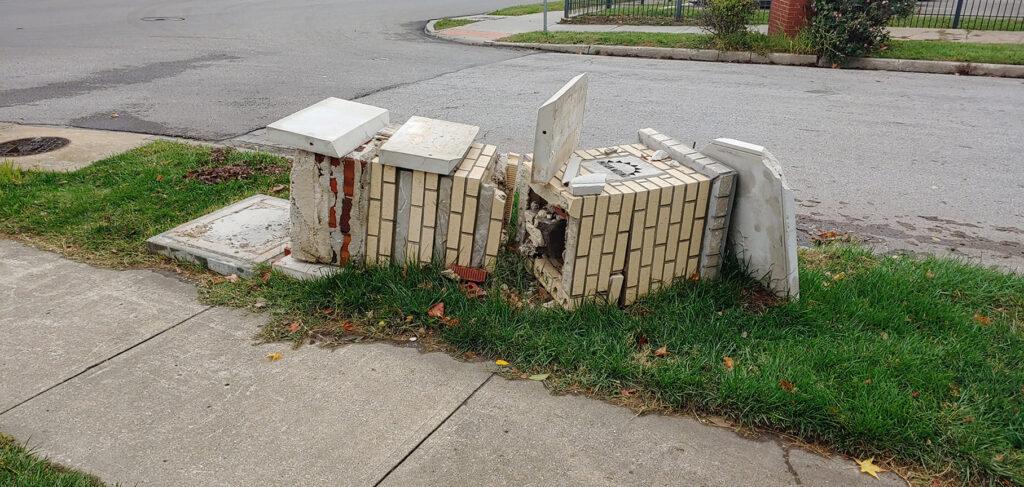
In 1995, Historic Northeast Kansas City boasted one of the strongest coalitions of neighborhood associations in the city. Under the umbrella of Community Development Corporation’s (CDC) Old Northeast Inc., Northeast neighborhoods, along with neighborhood associations in Midtown and a few on the city’s East side, were the gauntlet city officials had to pass through when approval was sought for any major capital spending projects that impacted the city’s urban core. So strong was the neighborhood association president’s position, it was often used as a springboard to a city council seat. That’s the kind of gravitas our neighborhoods had at one point in time.
A quick perusal of Northeast neighborhood associations these days, this strong neighborhood-minded News Dog can see one, maybe two, neighborhood organizations that come remotely close to the activity level of those old-school neighborhood associations. The Scarritt Renaissance Neighborhood is even thinking of scaling back their meeting schedule with “social building events,” whatever those are, in the off months because apparently there just aren’t enough critical issues to discuss that directly impact their community.
As someone who was a neighborhood association president here in Northeast for a decade back in the day, this Dog can say without question that at this point in our city’s history, with a rubber-stamp Mayor and City Council – that regularly shred the charter, making back-room, out of the spotlight deals that don’t do anything but feather their own nest – now is not the time to be a passive, bridge club group that sips wine and shrugs their shoulders in dismay while their community is swirling the drain.
Here are just a few critical issues facing Northeast neighborhoods that require a strong hand versus shrinking back into the woodwork for fear of the radical, vocal minority.
1.) Last Thursday, the Mayor and Council – with zero community input – made a fast play to locate a majority of Kansas City’s houseless population on the doorstep of Northeast because it’s convenient. No community outreach, no plan, just shut up and take your medicine regardless of how it tastes or impacts the greater community at large in terms of crime, trash and safety. To date, only one Northeast neighborhood that this Dog is aware of has aggressively fought the repeated attempts to make this a reality. Apparently no other neighborhoods want to have the hard conversation for fear of being called out or picketed by the radical, sign-toting opposition.
2.) The City has just hired a new Parks Department Director after a months-long, nationwide search. That hiring has apparently triggered the department’s second in command, Roosevelt Lyons, to step down effective November 1, leaving the top two Parks Department spots vacant until at least November 15. After that, those positions will be occupied by relative newcomers with zero depth on the bench in terms of knowing what neighborhood projects and priorities were agreed upon with outgoing Parks staff. Add to the mix that when Terri Rynard was elevated to the top Parks spot in 2018, a number of top level Parks Department Managers transferred over to the Public Works Department. The running municipal joke is that the Public Works Department knows more about the Parks Department than the Parks Department itself. Given that bureaucratic instability, how many Northeast neighborhood associations have reached out to the new Parks Department Director in order to establish priorities for their neighborhoods? Is the new Director slated for any neighborhood association meetings yet? Answering “no” to one or both of the previous questions puts your neighborhood organization behind the curve before the pitch was even thrown. Back when Northeast neighborhoods were strong, those meetings would have already been on the books – or history – at this stage of the game.
3.) Official Council-approved Neighborhood Plans being routinely cast aside in favor of developments that are 180 degrees out of phase with an already approved area plan. Case in point, the St. John Corridor Infrastructure and Land Use Plan was passed by Council in 2005 after dozens of public planning sessions and countless volunteer hours spent with City Planning staff, developing the best overall plan for the St. John Corridor to maintain what remained of its historic character while still allowing for future development within the scope of the plan. Apparently all that planning was all for nought, given the number of current and proposed projects that throw the baby out with the bathwater in terms of maintaining the character and adopted land use on the corridor. Historic facades obliterated, zoning and land use thrown out the window, all apparently with little or no opposition or input from neighborhoods.
4.) Still no city jail. This is a huge public safety issue that nobody is talking about. With the exception of a few holding cells at the Metro Patrol Police Station at 76th & Prospect, the City has zero cells for municipal arrests. When those cells fill up, and they do fill up quickly, prisoners are transported to leased space in Vernon or Johnson Counties in Missouri. For those keeping score at home, that’s Nevada or Warrensburg, Mo., some 60 or 90 miles outside of the metro. We don’t have the space this week to fully explore this issue, but suffice it to say it’s fodder for an upcoming editorial given the ongoing negative impacts this carries for neighborhoods.
Neighborhood organizations in Northeast currently have a choice. They can continue to shrink away from the tough conversations and hard decisions and continue to get dealt to in terms of the City passing plans and ordinances that directly and negatively impact their neighborhood residents they represent, or neighborhood leaders can return to a point where strong neighborhoods demanded a voice at City Hall. Operating under the current paradigm that if a proposed development doesn’t land inside or on the border of a neighborhood it won’t impact their residents is both dangerous and short-sighted especially in the current local legislative climate.
















